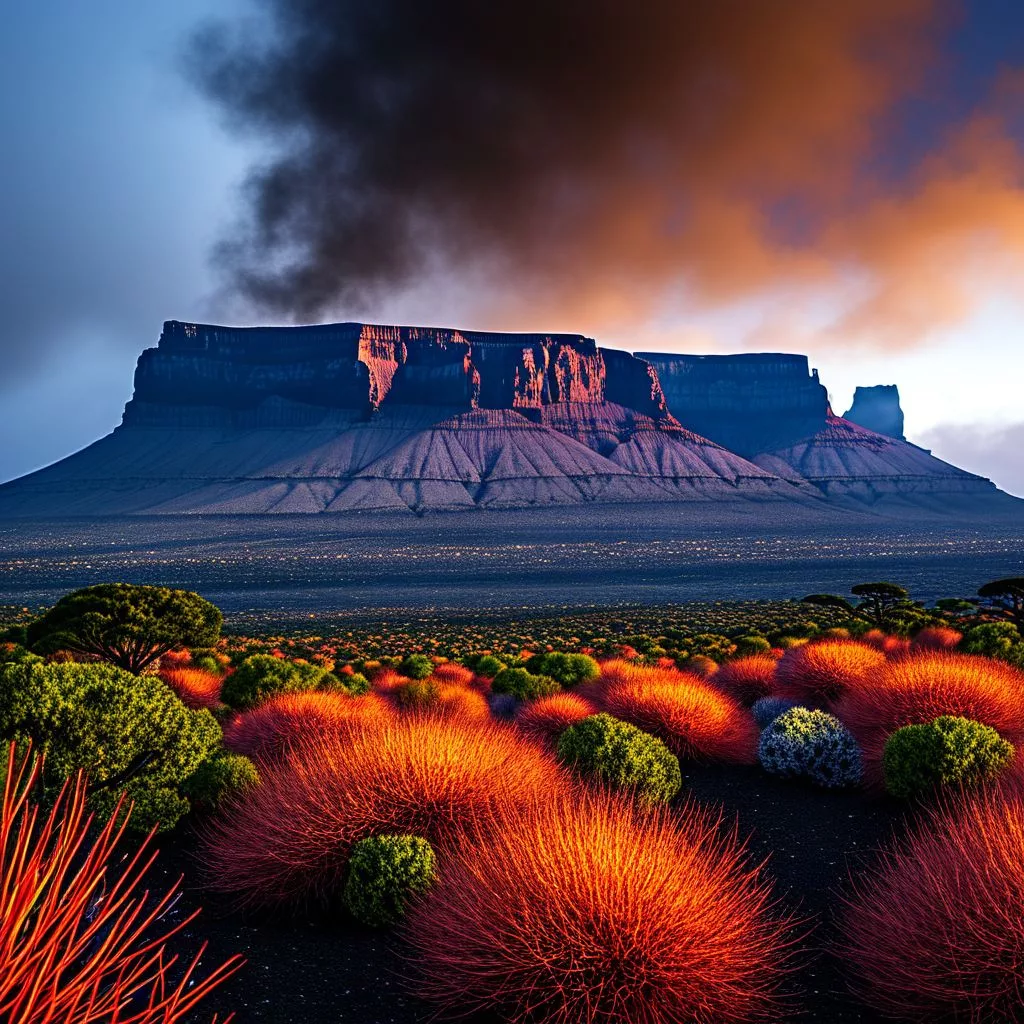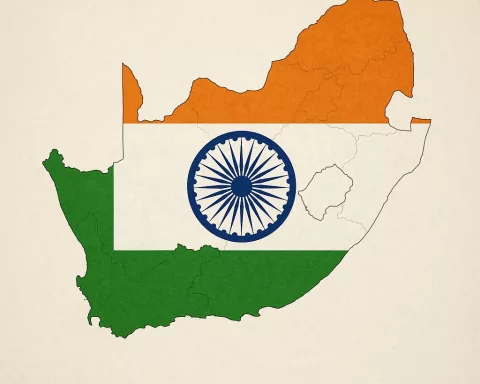Each dry summer, wildfires sweep across Cape Town’s Table Mountain, driven by hot winds, invasive plants, and sometimes human carelessness. These fires roar quickly through thick fynbos, threatening rare plants and homes alike, while firefighters battle bravely from land and sky to control the flames. The community comes together, sending supplies and support, showing how deeply Cape Towners care for their mountain. Though fire is part of nature’s cycle, climate change and frequent blazes put this delicate balance at risk, making every effort to protect Table Mountain more important than ever.
What causes and challenges are involved in wildfires on Table Mountain in Cape Town?
Wildfires on Table Mountain are caused by dry summer winds, invasive vegetation, and sometimes arson. Challenges include rapid fire spread in dense fynbos, difficult terrain, protecting rare ecosystems, and increasing fire frequency due to climate change, requiring coordinated firefighting and community support.
The Outbreak of Disaster
Sunday dawned like any other, but by midday, the peaceful rhythm of Cape Town’s southern suburbs shattered as smoke began to billow across Table Mountain’s distinct slopes. A wildfire had erupted in the Upper Tokai and Silvermine areas, sending columns of ash skyward and casting a dramatic shadow over residential neighborhoods. Before long, the advancing blaze forced officials to close Ou Kaapse Weg, a key mountain pass; its familiar curves vanished in thick, choking smoke, halting traffic in both directions and alerting the city to the seriousness of the threat.
Wildfires are a recurring element in Cape Town’s seasonal narrative, as predictable as the return of summer’s dry winds. Yet, each year’s blaze brings fresh urgency and anxiety. Table Mountain National Park, stretching over the peninsula, is more than a scenic backdrop—it’s an ecological treasure chest, home to rare fynbos species that rely on fire for regeneration but are increasingly threatened by the frequency and intensity of modern wildfires. These vital landscapes link Cape Town to a global pattern, as similar fire crises play out from California’s canyons to Europe’s Mediterranean hills.
The 2024 fire’s rapid escalation caught many residents off guard. Within hours, flames had devoured swathes of indigenous vegetation and crept perilously close to homes. Ash rained down on gardens and patios, while residents tuned in to radio updates and peered anxiously at the horizon. An ordinary weekend had transformed into a citywide emergency, with both the natural and human worlds at risk.
The Firefighting Effort: Heroes on Land and in the Skies
Emergency services responded with speed and precision. Helicopter crews swooped over the burning slopes, scooping water from nearby reservoirs and unleashing torrents onto the flames in a repetitive, urgent ballet. On the ground, seasoned teams from Table Mountain National Park, the City of Cape Town’s Fire and Rescue, and the renowned Volunteer Wildfire Services coordinated relentlessly to hold the line. Their combined efforts represented a blend of professional expertise and community spirit, with every member acutely aware of what was at stake.
Firefighting in Table Mountain’s terrain presents unique challenges. The park’s dense, fire-adapted fynbos burns quickly and unpredictably, often forcing crews to create emergency firebreaks or retreat in the face of dangerous wind shifts. During the 2024 incident, authorities deployed three helicopters and a spotter plane to map the fire’s spread and direct ground teams where they were needed most. These coordinated tactics proved crucial in protecting key conservation areas and nearby homes.
At the same time, the closure of Upper Tokai and Silvermine to the public underscored the fire’s ecological stakes. These regions shelter some of the last remnants of Cape Flats Sand Fynbos, an ecosystem teetering on the brink of extinction. As firefighters doused flames, conservation specialists monitored rare plant populations and urged the public to comply with access restrictions, knowing that the aftermath of uncontrolled fire could erase decades of restoration work.
Community Response and the Human Element
As the crisis unfolded, Cape Town’s residents rallied in support of the men and women battling the flames. SANParks, which manages Table Mountain National Park, issued urgent requests for supplies—not for those driven from their homes, but for the exhausted firefighters working around the clock. Donations poured into the Newlands Fire Base: bottled water, energy drinks, fresh fruit, snacks, and crucial eye drops to counter the ever-present smoke. These small gestures, multiplied by hundreds, became a lifeline and morale booster for those on the front lines.
Cape Town’s collective response to wildfires has become almost ritualistic, a reflection of the city’s deep connection to its mountain. In previous years—most notably during the devastating 2015 Muizenberg fire—residents and businesses transformed into ad hoc support networks, delivering supplies and encouragement to staging posts around the park. This practical solidarity demonstrates the city’s understanding that its well-being is inextricably linked to the fate of Table Mountain.
However, not all human involvement was positive. Investigators responded to early reports that this fire, like several before it, may have been deliberately set. SANParks urged anyone with information about the fire’s origins to come forward, highlighting the ongoing challenge of arson and negligence. Every unnecessary blaze costs the city dearly—not only in immediate danger to life and property but in the destruction of irreplaceable ecosystems and the massive allocation of public resources.
Lessons from the Flames: Ecology, Change, and Hope
Fire is both a destroyer and a creator in the Cape’s unique fynbos ecosystem. Many indigenous plants have evolved to require occasional burning for their seeds to germinate. In this way, a controlled, infrequent fire cycle renews the landscape. Yet the combination of climate change, invasive alien vegetation, and human activity has upended this natural rhythm. Invasive trees such as pines and wattles burn far hotter and longer than native fynbos, making fires harder to control and accelerating the cycle beyond what the ecosystem can handle.
As wildfires become more frequent and intense, the delicate balance is disrupted. Shorter intervals between burns prevent many species from reaching maturity or reseeding, leading to a gradual loss of biodiversity. Conservationists warn that if this trend continues, some of Table Mountain’s rarest plants—and the insects, birds, and animals that depend on them—could vanish forever.
Despite these threats, the city’s landscape and its people show remarkable resilience. In the months following a fire, blackened slopes quickly sprout new green shoots. The distinctive aroma of smoke gives way to the fresh scent of regrowth, and the mountain’s trails, once closed, gradually reopen to hikers, cyclists, and nature lovers. Artists and photographers capture the striking contrasts between the scorched earth and tender new growth, finding beauty in both destruction and renewal.
Stewardship and Shared Responsibility
The cycle of fire on Table Mountain is a sobering reminder of the fragile contract between people and their environment. While wildfires are inevitable in this ancient landscape, their increasing frequency and destructiveness are not. Vigilance, responsible land management, and a culture of stewardship remain the best tools for safeguarding both the mountain’s ecological heritage and the city’s safety.
Every effort to support firefighters, every compliance with closure notices, and every act of environmental care helps tip the balance toward recovery and resilience. As climate change looms and the city grows, Cape Town’s annual confrontation with wildfire may only become more challenging. The lessons learned with every blaze—about vigilance, preparation, and unity—will shape how future generations cherish and protect Table Mountain, the city’s enduring wild heart.
What causes wildfires on Table Mountain in Cape Town?
Wildfires on Table Mountain are primarily caused by a combination of dry summer winds, invasive vegetation such as pine and wattle trees, and sometimes human actions like arson or negligence. The hot, dry conditions typical of Cape Town’s summer create an environment where fires can ignite and spread rapidly, especially through the dense fynbos vegetation that covers the mountain slopes.
Why are wildfires on Table Mountain particularly challenging to control?
The challenges in controlling wildfires on Table Mountain include the rapid spread of fire through the thick, fire-adapted fynbos, the mountain’s difficult and rugged terrain, and unpredictable wind shifts. Invasive alien plants burn hotter and longer than native vegetation, increasing fire intensity. Firefighters must coordinate air and ground efforts, create emergency firebreaks, and often work under dangerous conditions to protect both natural ecosystems and nearby residential areas.
How do wildfires impact Table Mountain’s unique ecosystem?
Fire is a natural and necessary part of the fynbos ecosystem as many plants rely on periodic burns to regenerate. However, increased fire frequency and intensity—exacerbated by climate change and invasive species—disrupt this balance. Too-frequent fires prevent plants from reaching maturity and reduce biodiversity, threatening rare and endangered species like the Cape Flats Sand Fynbos. This puts both plant and animal communities at risk of long-term decline.
What role does the community play during wildfire emergencies on Table Mountain?
The Cape Town community plays a vital role in supporting firefighting efforts by donating supplies such as water, snacks, energy drinks, and eye drops to sustain firefighters. Residents also respect closure notices and provide moral support, showing a deep connection to the mountain. This spirit of collective responsibility helps sustain the emergency response and fosters resilience during and after fire events.
What measures are taken by emergency services to fight wildfires on Table Mountain?
Emergency services deploy a combination of ground teams and aerial support, including helicopters that scoop water from reservoirs to douse flames, and spotter planes that map fire spread and direct operations. Firefighters from the City of Cape Town Fire and Rescue, Table Mountain National Park, and Volunteer Wildfire Services work together to create firebreaks, protect homes, and preserve sensitive conservation areas.
How is climate change affecting wildfire patterns on Table Mountain?
Climate change is increasing the frequency, intensity, and unpredictability of wildfires on Table Mountain by contributing to hotter, drier summers and stronger winds. These conditions exacerbate the natural fire cycle and strain the ecosystem beyond its capacity to recover. The result is a more fragile environment requiring greater vigilance, improved land management, and strong community engagement to safeguard the mountain’s ecological and social value.








